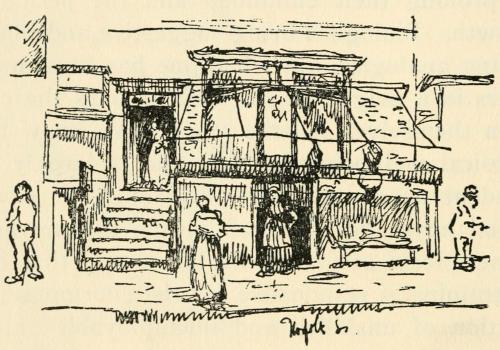Visit to download the full and correct content document: https://textbookfull.com/product/gandhi-s-search-for-the-perfect-diet-eating-with-the-w orld-in-mind-nico-slate/

More products digital (pdf, epub, mobi) instant download maybe you interests ...
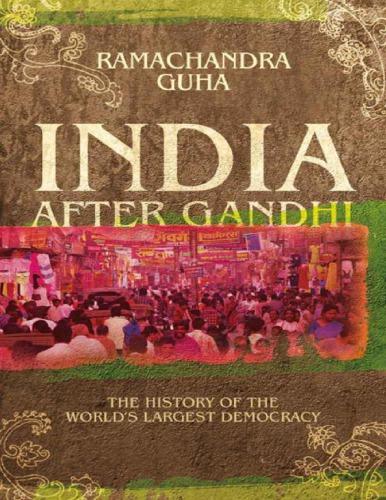
India after Gandhi the history of the world s largest democracy Guha
https://textbookfull.com/product/india-after-gandhi-the-historyof-the-world-s-largest-democracy-guha/

Temple of the Grail The Search for the World s Greatest Relic John Matthews
https://textbookfull.com/product/temple-of-the-grail-the-searchfor-the-world-s-greatest-relic-john-matthews/

Hungry Girl Clean Hungry Easy All Natural Recipes for Healthy Eating in the Real World Lisa Lillien
https://textbookfull.com/product/hungry-girl-clean-hungry-easyall-natural-recipes-for-healthy-eating-in-the-real-world-lisalillien/
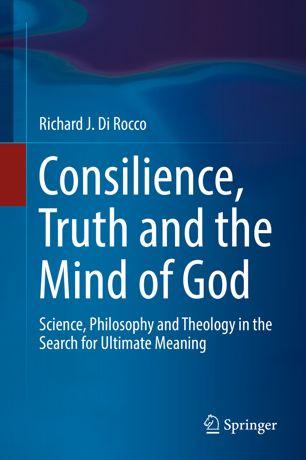
Consilience Truth and the Mind of God Science Philosophy and Theology in the Search for Ultimate Meaning Richard J. Di Rocco
https://textbookfull.com/product/consilience-truth-and-the-mindof-god-science-philosophy-and-theology-in-the-search-forultimate-meaning-richard-j-di-rocco/
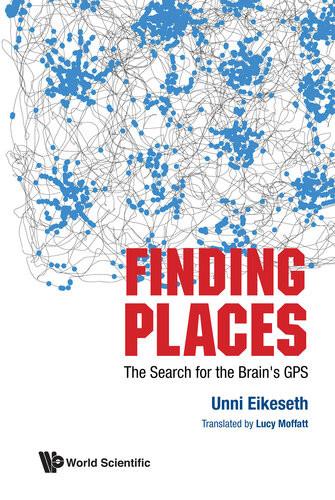
Finding Places The Search for the Brain s Gps 1st Edition Unni Eikeseth
https://textbookfull.com/product/finding-places-the-search-forthe-brain-s-gps-1st-edition-unni-eikeseth/

The Ultimate Diabetes Meal Planner A Complete System for Eating Healthy with Diabetes Jaynie Higgins
https://textbookfull.com/product/the-ultimate-diabetes-mealplanner-a-complete-system-for-eating-healthy-with-diabetesjaynie-higgins/

The Away Game The Epic Search for Soccer s Next Superstars First Edition Abbot
https://textbookfull.com/product/the-away-game-the-epic-searchfor-soccer-s-next-superstars-first-edition-abbot/

Nightingales in Berlin Searching for the Perfect Sound David Rothenberg
https://textbookfull.com/product/nightingales-in-berlinsearching-for-the-perfect-sound-david-rothenberg/

The fast diet cookbook low calorie fast diet recipes and meal plans for the 5 2 diet and intermittent fasting Rockridge Press
https://textbookfull.com/product/the-fast-diet-cookbook-lowcalorie-fast-diet-recipes-and-meal-plans-for-the-5-2-diet-andintermittent-fasting-rockridge-press/
Another random document with no related content on Scribd:
ungraded class her powers would have progressively deteriorated and Katie “would be in darkness.”
The teacher who thus first fixed our attention upon these defective children has long been a member of the settlement family. She has carried us with her in her zeal for them, and we have come to see that it is because the public conscience has been sluggish that means and methods have not been more speedily devised toward an intelligent solution of this serious social problem.
From the small beginnings of the experimental class in Henry Street a separate department in the public schools was created in 1908, and this year (1915) there are 3,000 children throughout the city under the care of specially trained teachers who have liberty to adapt the school work to the children’s peculiar needs. All these ungraded classes are under the direction of Miss Farrell.
Looking back upon the struggles to win formal recognition of the existence of these children, who now so much engage the attention of educators and scientists, we realize that our colleague’s devotion to them, her power to excite enthusiasm in us, and her understanding of the social implications of their existence, came from a deep-lying principle that every human being, even the least lovely, merits respectful consideration of his rights and his personality.
Much is required of the public school teachers, and many of them rise to every demand; but naturally, in so great a number, there are some who do not recognize that theirs is the responsibility for discovering the children who are not normal. Harry sits on our doorsteps almost every day, ready to run errands, and harmless as yet. Obviously defective, a “pronounced moron,” he was promoted from class to class, and when one of his settlement friends called upon the teacher to discuss Harry’s special needs, the teacher, somewhat contemptuous of our anxiety, observed that “all that Harry needed was a whipping.”
From one-half of one per cent. to two per cent. of children of school age are, it is estimated, in need of special instruction because of the quality or the imperfect functioning of their mental powers. The
public school has the power, and should exercise it, to bring within its walls all the children physically and mentally competent to attend it. If children are under intelligent observation, departures from the normal can in many instances be recognized in time for training and education according to the particular need. Long-continued observation and record of the child are essential to intelligent treatment of abnormalities concerning which there is even now very little accurate information. Cumulative experience and data, such as can be obtained only through the compulsory attendance at school of the multitudes of children of this type, will finally give a basis for scientific and humanitarian action regarding them.
Up to a certain period the child’s helplessness demands that every opportunity for development be given him, but that is not the whole of society’s responsibility. The time comes when the child’s own interests and those of the community demand the wisest, least selfish, and most statesmanlike action. Society must state in definite terms its right to be protected from the hopelessly defective and the moral pervert, wherever found. This constitutes the real problem of the abnormal. At the adolescent period those unfit for parenthood should be guarded—girls and boys—and society should be vested with authority and power to accomplish segregation, the conditions of which should attract and not repel.
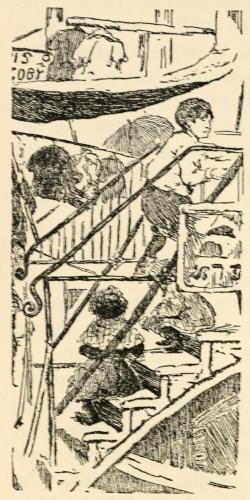
Because so much needs to be said upon it, if anything is said at all, I am loath to touch upon the one great obstacle to the effective use of all the intelligence and the resources available for the wellbeing of these children, the most baffling impediment to their and the community’s protection, namely, the supreme authority of parenthood, be it never so inefficient, avaricious, or even immoral.
The breaking up of the family because of poverty, through the death or disappearance of the wage-earner, was, until comparatively recent years, generally accepted as inevitable.
In the first winter of our residence on the East Side we took care of Mr. S , who was in an advanced stage of phthisis; and we daily admired the wonderful ability of his wife, who kept the home dignified while she sewed on wrappers, nursed her husband, and allowed nothing to interfere with the children’s daily attendance at school. When her husband died it seemed the most natural thing in the world to help her to realize her own wishes and to approve her good judgment in desiring to keep the family together. The orphan asylum would doubtless have taken the children from her, leaving her childless as well as widowed, and with no counterbalancing advantage for the children to lighten her double woe. A large-minded lover of children, who gave his money to orphans as well as to orphanages, readily agreed to give the mother a monthly allowance until the eldest son could legally go to work. It was our first “widow’s pension.”
Our hopes in this particular case have been more than realized. The eldest boy, it is true, has not achieved any notable place in the community; but his sisters are teachers and most desirable elements in the public school system of the city,—living testimony to the worth of the mother’s character.
In no instance where we have prevented the disintegration of the family because of poverty have we had reason to regret our decision. Of course, the ability of the mother to maintain a standard
in the home and control the children is a necessary qualification in any general recommendation for this treatment of the widow and orphan, and competent supervision is essential to insure the maintenance of these conditions.
At the famous White House Conference on Children, held at the invitation of President Roosevelt, there was practical unanimity on the part of the experts who gathered there that institutional life was undesirable and that wherever possible family life should be maintained. Testimony as to this came from many sources; and keeping the family together, or boarding the orphan with a normal family when adoption could not be arranged, became the dominant note of the conference.
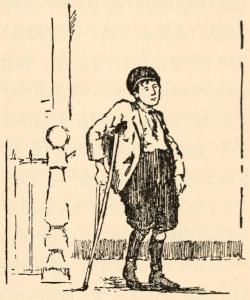
The children, in this as in many other instances, led us into searching thought many years ago. Forlorn little Joseph had called upon me with a crumpled note which he reluctantly dragged from a pocket. It was from the admitting agent of an orphanage, explaining that Joseph could not be taken into the institution until his head was “cured”; and it gave some details regarding the family, the worthiness of the mother, and her exceeding poverty. The agent hoped that I might relieve her by expediting Joseph’s admission.
I tried to make the child’s daily visit to me interesting. The treatment was not painful, but the end of each visit—he came with patient regularity every day—left me as dolorous as himself. One day I tried, by promise of a present or of any treat he fancied, to bring out some expression of youthful spirit—all unavailingly. “But you must wish for something,” I urged; “I never knew a boy who didn’t.” For the first time the silent little lad showed enthusiasm. “I
wish you wouldn’t cure my head, so I needn’t go to the orphan asylum.”
Unscrupulous parents, I am well aware, often try to shift the responsibility for their children upon public institutions, but there are many who share Joseph’s aversion to the institutional life, and we early recognized that the dislike is based upon a sound instinct and that a poor home might have compensating advantages compared with the well-equipped institution.
There have been great changes in institutional methods since I first had knowledge of them, and much ingenuity has been shown in devising means to encourage the development of individuality and initiative among the orphans. The cottage plan has been introduced in some institutions to modify the abnormal life of large congregations of children. But at best the life is artificial, and the children lose inestimably through not having day by day the experiences of normal existence. Valuable knowledge is lost because the child does not learn from experience the connection between the cost of necessities and the labor necessary to earn them. It was somewhat pathetic, at another conference on childsaving, to hear one of the speakers explain that he tried to meet this need by having the examples in arithmetic relate to the cost of food and household expenditures.
The lack of a normal emotional outlet is of consequence, and as a result astute physiognomists often recognize what they term the “institution look.” Maggie, an intelligent girl, who has since given abundant evidence of spontaneity and spirit, spent a short time in an excellent orphanage. She told me the other day, and wept as she told it, that she had met no unkindness there, but remembered with horror that when they arose in the morning the “orphans” waited to be told what to do; and that feeling was upon her every hour of the day. In fact, Maggie had stirred me to make arrangements to take her out of the institution because, when I brought her for a visit to the settlement, she stood at the window the entire afternoon, wistfully watching the children play in our back yard, and not joining them because no one had told her that she might.
One is reluctant to speak only of the disadvantages of institutional life, for there are many children rescued from unfortunate family conditions who testify to the good care they received, and who, in after life, look back upon the orphanage as the only home they have known. For some children, doubtless, such care will continue to be necessary, but the conservative and rigid administration can be softened, and the management and their charges delivered out of the rut into which they have fallen, and from the tyranny of rules and customs which have no better warrant than that they have always existed.
Perhaps these illustrations are not too insignificant to record. Happening to pass through a room in an asylum when the dentist was paying his monthly visit, I saw a fine-looking young lad about to have a sound front tooth extracted because he complained of toothache. No provision had been made for anything but the extraction of teeth. An offer to have the boy given proper treatment outside the institution was not accepted, but it needed no more than this to insure better dentistry in his case and in the institution in future. The reports stated that corporal punishment was not administered. When a little homesick lad displayed his hands, swollen from paddling, a request for an investigation, and that I be privileged to hear the inquiry, put a stop, and I am assured a permanent one, to this form of discipline. These are the more obvious disadvantages of institutional life for the child. The more subtle and dangerous are the curbing of initiative and the belittling of personality
An intelligent observer of the effects of institution life on boys, a Roman Catholic priest, established a temporary home in New York to which they could come on their release from the institution until they found employment and suitable places to board. His insight was shown by his provision for the boys during their brief sojourn with him of a formal table service, and weekly dances to which girls whom he knew were invited. As he astutely observed, the boys often went into common society, or society which made no demands, because, from their lack of experience, they felt ill at ease in a circle where any conventions were observed.
Where life goes by rule there is little spontaneous action or conversation, but the children occasionally give clews to their passion for personal relationships. In an institution which I knew the children were allowed to write once a month to their friends. More than one child without family ties took that opportunity to write letters to an imaginary mother, to send messages of affection to imaginary brothers and sisters, and to ask for personal gifts. They knew, of course, that the letters would never leave the institution.
An unusual instance of intense longing for family life and the desire to “belong” to someone was given by Tillie, who had lived all her life in an orphan asylum. Sometimes she dreamed of her mother, and often asked where she was. When she was ten years old the wife of the superintendent told her that her mother had brought her to the asylum, but that all she could remember about her was that she had red hair. From that day the child’s desire to re-establish relations with her mother never flagged. In the files of the asylum a letter was discovered from an overseer of the poor in an upstate town, saying that the woman had wandered there. At Tillie’s urgent request he was written to again, and after a search on his part it was learned that she had been declared insane and taken to the hospital at Rochester. The very day that Tillie was released from the orphan asylum she secured money for the trip and went to Rochester. The officials of the hospital received her kindly and took her into the ward where, although she had no memory of having seen her, she identified her mother—doubtless by the color of her hair. The mother, alas, did not recognize her Two years later the girl revisited the hospital and found her mother enjoying an interval of memory. Tillie told me that she learned “two important things”—that she had had a brother and my name. How I was connected with the fortunes of the family the poor, bewildered woman could not explain, and I have no recollection of her. Tillie followed these clews, as she has every other. She has learned that the brother was sent West with orphans from an Eastern institution, and that he has joined the army. The devoted girl is making every effort to establish a home to which she can bring the mother and brother, utterly regardless of the burden it will place on her young shoulders.
We must turn to the younger countries for testimony as to the wisdom of the non-institutional care of dependent children. In Australia the plan for many years in all the provinces has been to care for them in homes, and in Queensland and New South Wales the laws permit the children to be boarded out to their own mothers. It is encouraging to note the increasing number of responsible people in America who are ready to adopt children. It may not be possible to find a sufficient number of suitable homes to provide for all who are dependent; but once the policy of decentralization is established, other methods will be evolved to avoid large congregations of boys and girls. Two of my colleagues and I have found much happiness in assuming responsibility for eight children. Quite apart from our own pleasure in taking to ourselves these “nieces” and “nephews,” we believe that we shall be able to demonstrate convincingly the practicability of establishing small groups of children, without ties of their own, as a family unit. Our children live the year round in our country home, and are identified with the life of the community; and we hope to provide opportunity for the development of their individual tastes and aptitudes.
Education and the child is a theme of widest social significance. To the age-old appeal that the child’s dependence makes upon the affections has been added a conviction of the necessity for a guarded and trained childhood, that better men and women may be developed. It is a modern note in patriotism and civic responsibility, which impels those who are brought in contact with the children of the poor to protect them from premature burdens, to prolong their childhood and the period of growth. Biologists bring suggestive and illuminating analogies, but when one has lived many years in a neighborhood such as ours the children themselves tell the story. We know that physical well-being in later life is largely dependent upon early care,
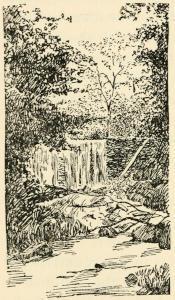
that only the exceptional boys and girls can escape the unwholesome effects of premature labor, and that lack of training is responsible for the enormous proportion of unskilled and unemployable among the workers.
The stronghold of our democracy is the public school. This conviction lies deep in the hearts of those social enthusiasts who would keep the school free from the demoralization of cant and impure politics, and restore it to the people, a shrine for education, a center for public uses.
The young members of the settlement clubs hear this doctrine preached not infrequently. Last June the City Superintendent, addressing a class graduating from the normal school, made an appeal for idealism in their work. He spoke of the possibilities in their profession for far-reaching social service, and named as one who exemplified his theme the principal of a great city school, once one of our settlement boys.
